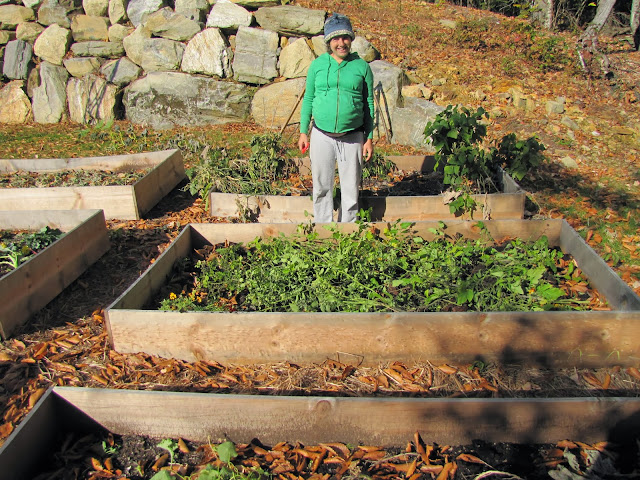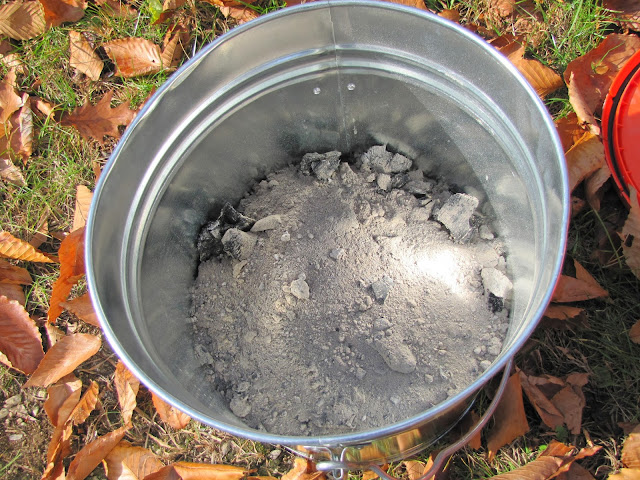While making sure to keep a fully stocked feeder (both seed and suet are a great idea), there are other things you can do to help the birds even more this winter. To give you some ideas, I will tell you what we did for our birds this winter.
Bird Treat Muffins
On Christmas Eve, my two year old son and my one month old son were busy helping me start a new tradition: making muffins for the birds to put out on Christmas morning. These nutritious high-fat and fruity muffins are wonderful for the birds...though the squirrels also think they are delicious. We found this fantastic recipe in Attracting Birds to your Backyard by Sally Roth:
2/3 cup all-purpose flour
1 1/3 cup whole-wheat, buckwheat, or other whole-grain flour
2 teaspoons baking powder
1 cup sunflower seeds, raw
1/2 cup finely chopped raisins
1/2 cup finely chopped dried cherries
1/2 cup chipped unsalted peanuts
1/4 cup finely chopped dried apritos
1/2 cups chopped apples
6 slices bacon, cooked and crumbled (since we are vegetarians, we ommitted this and added a few tablespoons of flax seeds which are rich in healthy fats instead)
1 egg, beaten
2 tablespoons honey or molasses
1 cup milk
3 teaspoons melted butter
- Grease a mini muffin pan.
- Combine the flour, baking powder, sunflower seeds, raisins, dried cherries, peanuts, dried aprictos, apples and flax seeds (or bacon if you are following the original recipe)
- In a separate bowl, beat together the egg, honey, milk, and melted butter.
- Pour the liquid mix into the dry ingredients and stir to combine.
- Spoon the batter into the muffin pan, filling each cup 2/3 full.
- Bake at 400 for 20 to 25 minutes
- After the muffins cool, stick them on a spiked feeder, or serve whole in a tray feeder or on the ground.
My son actually really enjoyed snacking on these muffins too.
Christmas Tree for the Birds
Rather than put your Christmas tree on the curb for the chipper, or toss it into the woods, consider planting it in a bucket of sand and putting it outside for the birds. Since we have so much snow this year, we just dug a hole near the feeders on our deck and planted our Christmas tree in it. The tree branches provide shelter for the birds that protects them from the elements, predators, and gives them a place to rest. You can also have fun and decorate it with treats for the birds (of which they will be very appreciative). In our Christmas tree, we hung:
Raisin Mini-Wreath
Peanut Chains
Using and embroidery needle, a thimble, and some yarn/twine, I threaded unsalted shelled peanuts to form large chains to drape around the tree.
Orange Baskets
You can either slice oranges into 1/4 inch rounds or cut them into baskets like we did here.
Cookie Cutter Treat Ornaments
This is another recipe I got out of the amazing book, Attracting Birds to your Backyard by Sally Roth:
6 cups birdseed (we just used our usual mix, but in the book it suggests either using 4 cups millet, 1 cups flaxseed and 1 cup black oil sunflower seed or 4 cups chopped unsalted peanuts and 2 cups black oil sunflower seeds)
1 tablespoon butter
1 tablespoon butter
1/2 cup sorghum or molasses
1/4 cup sugar
- Spray cookie sheet or waxed paper on cookie sheet liberally with nonstick cooking spray and arrange cookie cutters on the sheet.
- Combine a seed mixture into a large bowl (unless you are using a premixed concoction like we did).
- Melt the butter in a large saucepan; add the molasses and sugar.
- Stir until the sugar is dissolved.
- Bring to a boil; cover and cook for about 3 minutes without stirring.
- Uncover and continue to boil without stirring until syrup reaches 290 degress F on a candy thermometer. IMMEDIATELY pour over the seed mix.
- Stir the mixture with a strong, long-handled wodden spoon until syrup is distributed evenly.
- Spoon birdseed mix into cookie cutters.
- Grease fingers and press very firmly into molds until seed mixture is to the depth of cookie cutter. Work quickly and carefully; molasses will be HOT!
- Thread a large upholstery needle with string and poke through treat to hang. You can heat the needle tip with a flame if you have trouble poking the needle through.
While we did have some bird visitors to our tree, our main visitor this year was a red squirrel.
Here are some other ideas of how you can help our bird friends in the winter:
- Plant evergreens and/or fruit and nut plants for the birds:These provide food and shelter all year round, but are especially great in winter.
- Holly tree (Ilex spp.)
- Chokecherry (Aronia spp.)
- Most Hawthorn trees (Crataegus spp.)
- Eastern Juniper (Juniperus virginiana)
- Sumac (Rhus spp.)
- Crabapple (Malus spp.)
- Viburnum shrubs (often called arrowwood)
- Native roses (e.g., Rosa arkansana)
- Virginia Creeper (Parthenocissus quinquefolia)
- White Oak (Quercus alba)
- Spruces
- Cedars
- Yews
- Pines
- Hemlock
- Fir
- Hang some evergreen boughs or wreaths near/on your feeders
- Hang old grapes
- Put out day-old doughnuts
- Hang out peanut butter stuffed pinecones (don't roll in birdseed; not all peanut-butter eaters eat birdseed mix)


























































